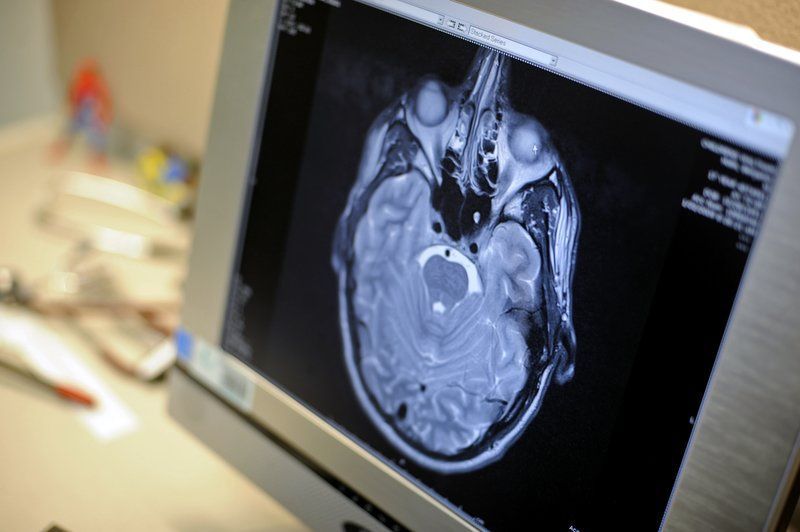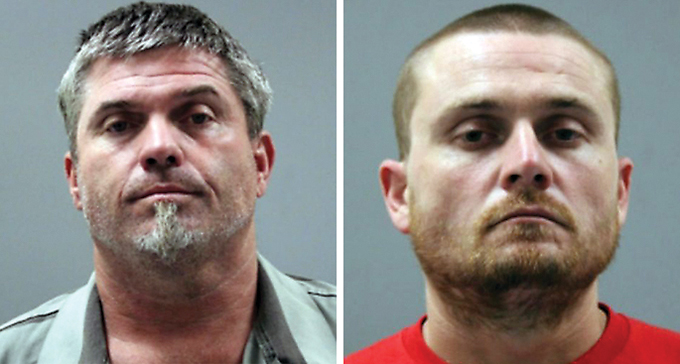Breakthrough surgery cures football player’s chronic headaches
Published 4:00 pm Monday, August 17, 2015

- File Photo The Eagle-Tribune.This is a brain scan of Ben Holm's at Children's Hospital Boston in Waltham from February of 2010.
NORTH ANDOVER, Mass. — He suffered from debilitating headaches for years — and now he’s finally free.
After suffering two concussions in under three weeks as a football player at North Andover High School in North Andover, a suburb of Boston, Ben Holm began suffering from chronic headaches and migraines that would come on quickly and sometimes last two days. He also struggled with short-term memory loss.
Trending
Life was not good, Holm, now 23, remembers.
Last December, that changed, however, when he underwent a new surgery, Occipital neuralgia decompression, and was cured.
After five years of debilitating headaches and the fear that his compromised quality of life would be his future, his nightmare was over.
Facing limitations
Holms, a successful tight end, stopped playing football as a junior in high school as his headaches worsened.
“All of sudden see a shining light, you get a headache,” he says. “Or you hear some loud noise, you get a headache.”
Trending
He tried acupuncture, massage therapy, and physical therapy. He attended the renowned Children’s Hospital Concussion Clinic in Boston.
“I tried everything,” he said. “But nothing worked.”
Then late last fall his sister and a family friend both mentioned a story they saw on the news about a female soccer player who was diagnosed with concussion syndrome and suffered from chronic headaches. The young woman had breakthrough surgery — Occipital neuralgia decompression — and was cured.
“That definitely gave us some hope, just hearing that,” Holm said. “We started trying to learn more about what the process might be.”
What they learned was that some migraine headaches are the result of compressed nerves, rather than concussion syndrome. Not everyone, however, was a candidate for this new surgery. The patient needs to experience noticeable relief from nerve blocks administered by a pain specialist.
Holm remembers being nervous when he visited the specialist.
“The doctor finds the end of the nerve and, with a big needle, injects a steroid into the nerve,” Holm said. “It was amazing. I felt a release of pain right away. It was amazing.”
Unintended success
Cleveland plastic surgeon Dr. Bahman Guyeron discovered this migraine surgery by accident in 2000 after a plastic surgery patient told him that she had not suffered a migraine since her forehead lift.
He began studying the procedure and its effects on those with migraines. He found that 39 of his forehead lift patients reported they suffered from migraines — and of those, 31 reported “significant improvement or elimination of” migraine headaches after the plastic surgery.
Guyuron theorized that the majority of migraines occur when certain nerves in the head become irritated and release neurotoxins. Based on his understanding, Guyuron adapted forehead lift into nerve decompression surgery. He identified multiple trigger points around the face — mostly on the forehead, temple, back of the head and behind the eyes — and developed specific surgical techniques for each trigger site.
In 2008, Dr. Gerald “Jay” Austen, chief of plastic surgery at Massachusetts General Hospital, was impressed with Guyuron’s work and began offering the surgery. He estimates he has seen 400 to 500 patients with migraine issues and has operated on more than 200 of them.
“We found that 80 to 90 percent of the patients get better,” Austen said.
Relieving the pain
Holm’s pain doctor forwarded the results of his nerve-block procedure to Austen’s office last October. He was approved for surgery at Massachusetts General Hospital the week before Christmas.
The surgery entailed having the nerve endings under the facia muscle around his lower scalp cut and plucked out and put back into place. In layman’s terms, it’s like relieving a pinched nerve.
Holm slept for two hours after the surgery and distinctly remembers waking up tired, but happy.
“I sat straight up and I looked at my father saying, ‘I have not felt this way in a long time,'” he said. “I knew I was cured. It was unbelievable.”
As a business major who has only one semester remaining before graduating next May, he has much to look forward to.
“It was very tough sometimes,” he said. “If one person sees this and gets cured, I’d be very happy.”
Bill Burt is executive sports editor at The Eagle-Tribune.





